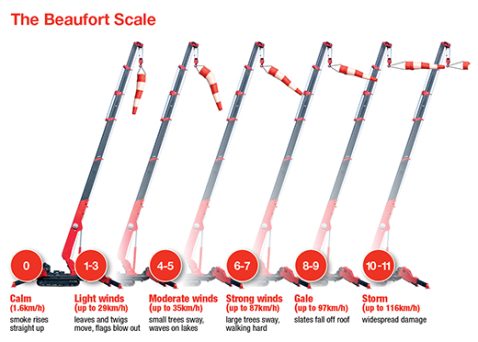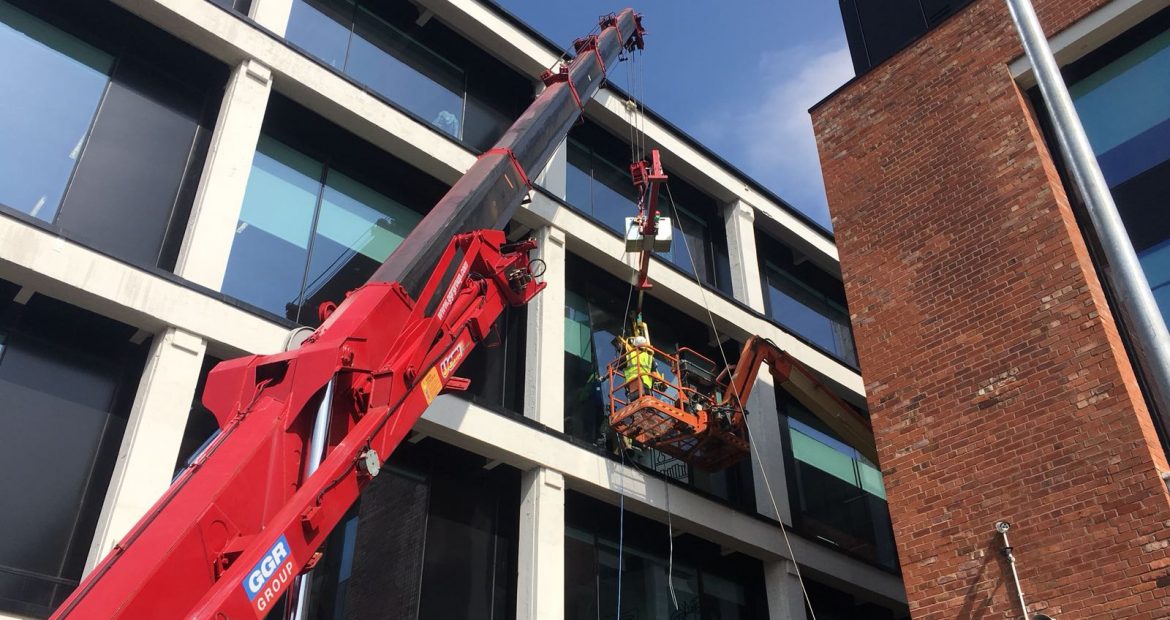With GGR’s vital safety guidance, you can avoid any potential dangers when operating cranes or vacuum lifters in heavy gusts like the ones we’ve been having recently.
It’s important to be aware of rapid changes in weather conditions when lifting outdoors. We all know that British weather is notoriously unpredictable, ranging from bright and sunny to damp and windy in an instant. Even the tiniest increase in wind speed can have a significant impact on the stability of compact cranes and the operation of vacuum lifters.

‘It is critical to remember that you are dealing with a potentially dangerous situation whenever heavy equipment is utilised on site,’ explains Kevin Fairholm, GGR’s Health and Safety Director. ‘When we add suspended loads and poor weather to the mix, the dangers multiply. Always consider the weather conditions on the job site in order to stay safe.’
Safe wind speed for Vacuum Lifters
For safe vacuum lifter operation, the maximum wind speed is 18 miles per hour / 29 kilometres per hour / 8 metres per second.
Strong winds could force the weight to wobble violently or fall, causing damage to the environment as well as injuries. Remember that wind speed rises with altitude, making high-level glazing and construction work especially riskier in heavy winds.
If you’re still worried about utilising a glass lifter at speeds below 29 km/h, you can provide some extra stability to the load by using hand cups to attach draw lines.
Safe wind speed for mini cranes
The maximum wind speed for safe compact crane operation is 22 mph (36 km/h) or 10 metres per second.
Compact cranes, such as our UNIC mini cranes, pick and carry cranes, mini crawler cranes, and trailer cranes, become more difficult to manage when wind speeds increase. Strong winds may cause a crane to topple or the boom to swing out of control. Working in windy situations becomes more dangerous when the boom is stretched longer.
It’s vital to keep in mind that when using a vacuum lifter with a tiny crane, the maximum wind speed at which you may safely operate is still 18 mph.
What is the best way to measure wind speed?
An anemometer can be used to measure wind speed and temperature on the spot.
We recommend consulting with the on-site health and safety officer when obtaining wind speed measurements, as wind readings can vary substantially depending on where they are collected due to the vortex effect surrounding tall buildings. The airflow is frequently slower in these regions due to the friction of the air going past the structure, hence wind speed data collected around buildings can be misleading.
If you don’t have an anemometer, you can estimate wind speed by observing your surroundings and applying The Beaufort Scale.
Always keep an eye on the weather while taking on a lift and make it a part of your regular safety inspection routine to ensure that you and your team are working safely.
We hope you found this safety information to be helpful; if you have any queries regarding operating GGR equipment in inclement weather, please contact our technical support team at your local depot or email us at info@ggrgroup.com.
Trackback URL: https://www.ggrgroup.com/news/ggrs-guide-to-using-cranes-and-vacuum-lifters-in-windy-weather/trackback/
